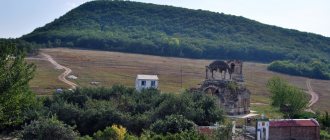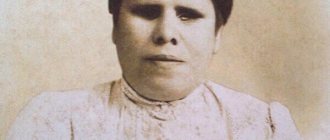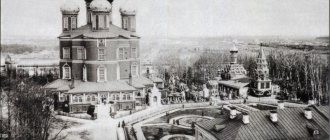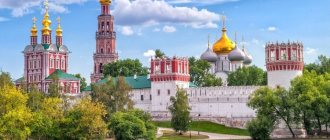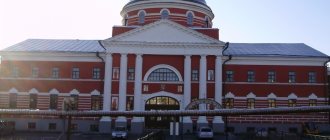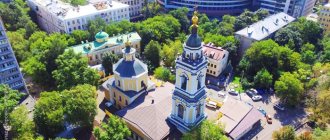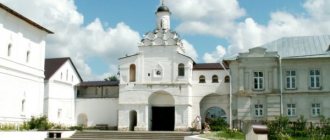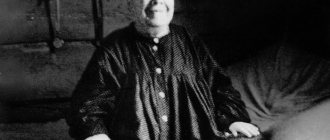For the most part, Orthodox saints are people who were glorified by spiritual exploits in ancient times, when the church was often persecuted by various rulers. But there are not many Christians who are glorified as saints, who are, practically, our contemporaries.
One of these saints and confessors was Saint Luke of Crimea. The nationally known surgeon showed unbending faith and uncompromising spirit. These qualities were most evident in the era of total atheism in our country. Fearing nothing, he traveled to many universities, gave lectures and sermons, invariably appearing in a black cassock and wearing a pectoral cross.
In the hospitals where the saint practiced as a doctor, there were always Orthodox icons, and he began all operations only after praying. More than once he was tried and sent into exile, but even there, in addition to providing medical assistance, he preached the Word of God. At the beginning of World War II, he wrote to Stalin that he was ready to continue his exile after the war if he was allowed to treat the wounded. He saved the lives of many soldiers, and made many think about God.
The “thaw” of the post-war years ended, and during Khrushchev’s rule the persecution of Orthodox Christians intensified. Saint Luke was again put in prison, the famous Butyrkas. The great confessor and companion of the faith died in Simferopol and was buried in the women's monastery near the Church of the Holy Trinity.
Where are the icons of Saint Luke of Crimea located?
Saint Luke of Crimea is considered the heavenly patron of physicians, especially surgeons and ophthalmologists. Doctors come to his holy image with prayer before complex operations. He also generously gives help to all the sick who ask his icon for health. There is much evidence of such miraculous healings.
- In the women's Holy Trinity monastery in Simferopol there are the relics of St. Luke of Crimea. There is also an image of the saint already marked by miracles.
- The Church of St. Luke was built in Yekaterinburg.
- In Fatezh, a small town in the Kursk region, next to the hospital where the future saint worked as a zemstvo doctor, an episcopal courtyard was built, where the icon of Luke of Crimea is in a place of honor.
There are also enough places in Moscow and the Moscow region where the icon of St. Luke of Crimea is venerated.
- In the city of Lyubertsy, in the Church of the Transfiguration of the Lord, there is an icon with a particle of relics in the reliquary.
- In Moscow, in the Church of the Iverskaya Mother of God on Bolshaya Ordynka, on Vskhodnya.
- In the famous Butyrka prison, a church was built, which also has an icon of Luke of Crimea. There he served his first prison sentence.
Christian shrines of Padua
After meeting and two years of correspondence with the Benedictine monk and icon painter from Padua, priest Giuseppe Pegoraro, who sent, along with short messages, photographs and information materials about the tomb and relics of St. Luke, located in his native Abbey of St. Justina, the author of these lines went (in 2015) with him to Padua.
Basilica of St. Justina in Padua
Abbot Giulio Pagnoni (P. Abate Don Giulio Pagnoni), aware in advance of the guest's arrival, blessed his stay for several days in the monastery and later kindly provided the necessary materials about the history of the study by a special group of scientists of the relics (relics without a head) of St. Luke, kept in the stone sarcophagus of the Basilica of St. Justina.
Sarcophagus with the relics of St. Bows
St. Luke, a native of Antioch in Syria, is an apostle of the 70, the author of the Gospel of Luke and the Acts of the Holy Apostles, a companion of the holy Apostle Paul, and by profession he was a doctor. Church tradition attributes to him the painting of icons of the Mother of God, therefore he is called the first icon painter and patron saint of painters.
According to the presentation of Saint Demetrius of Rostov, St. Luke, who died at an old age in Achaia, was buried in the city of Thebes (Greece). At the beginning of the 4th century, his relics, from which healing of eye diseases resulted, were transported to Constantinople, to the Basilica of the Twelve Apostles. Around 356, by order of the Roman Emperor Constantius II (317–361), a shrine containing the relics of St. The bows were transferred to Constantinople, where they were placed under the altar in the Basilica of the Holy Apostles. About the further history and location of the relics of St. Luke there is no reliable information. Some sources in Russian report that the crusaders during the era of religious military campaigns in the XI-XV centuries. transported the relics (the chapter) to Rome and placed them in St. Peter's Basilica, but there is no such information in the Vatican reference literature.
According to information materials published in 2002 by the Abbey of St. Justina, based on ancient hagiographic texts and manuscripts from the 14th – 15th centuries. (See: 2), on the territory of the cemetery adjacent to the monastery in the 11th – 12th centuries. Many relics of early Christian saints were discovered. In 1177, an oak sarcophagus with the supposed relics of St. was excavated here. Luke, as evidenced by the written name of the evangelist and the image on the sarcophagus of the symbol of three bulls - an emblem associated with the holy evangelist Luke. The interpretation of this symbol indicates that the apostle pays special attention to the death of Jesus Christ on the cross, and the bull (calf) was often used as a sacrificial animal.
Nowadays, the ancient oak sarcophagus, where the bone remains were located, is hidden in a special forged long reliquary displayed in the basilica.
Forged reliquary with an oak tomb containing the remains of St. Bows (right)
The unique find prompted Abbot Domenico and the Bishop of Padua, Gerardo Offreduci da Marostica, who reigned in 1165–1213, to appeal to Pope Alexander III (1105–1181) with a request to establish the ownership of these relics of St. Luke. In 1177, Pope Alexander III recognized that the remains discovered in Padua belonged to St. Luke (4). The Paduan monks studied many manuscripts telling about two main versions of the transfer of the relics of St. Luke from Constantinople. According to one of them, it took place during the reign of the Roman emperor Flavius Claudius Julian, also known in the history of Christianity as Julian the Apostate (331 or 332–363). According to another version, this event occurred during the time of iconoclasm in the 8th century.
Information has been preserved that already in the 10th century. Benedictine monks from the Abbey of St. Justina especially venerated the holy relics of the Apostle and Evangelist Luke. In 1313, for the further storage of the lead sarcophagus with relics, Venetian craftsmen, on behalf of the abbot, Italian historian and poet from Padua, Albertino Mussato (1261–1329), made a special tomb from colored marble, supported by five stone pillars and installed in one of the chapels. In the year the construction of the basilica was completed in 1562, the tomb was moved and installed in the left nave of the basilica, where it remains to this day.
General view of the Chapel of St. Luke
Icon “Crucifixion” (2008) by icon painter Giuseppe Pegoraro
The Chapel of St. Luke is decorated with frescoes by the artist Giovanni Storlato, telling about the life of St. Luke, the transfer of his relics and their discovery in Padua. On the central wall of the chapel hangs high a copy of the icon of the “Blessed Virgin Mary of Constantinople” (15th century), erroneously attributed in some publications in Russian to St. Luke. The bronze frame, flanked by two large floating angels, was made in 1960 by the Paduan sculptor Amleto Sartori (1915–1962). He is also the author of eight bronze lamps illuminating the chapel (1, p. 60).
During special services, a tall wooden cross is placed in the chapel to the left of the tomb, with the “Crucifixion” icon reinforced by it (2008) by the monk-icon painter Giuseppe Pegoraro. There are other icons of him in the basilica, and one of them is dedicated to St. Luke.
Icon of Saint Luke the Evangelist by icon painter Giuseppe Pegoraro
In the same Basilica of St. Justina there is a copy (1457) of the “Altarpiece of the Evangelist Luke” (1453–1454) by Andrea Mantegna, an Italian artist, representative of the Paduan school of painting. In the center of this altar, the original of which is kept in the Brera Pinacoteca in Milan, is an image of St. Luke.
Image of St. Luke (detail) on the "Altar of Luke the Evangelist" by Andrea Mantegna
Archival documents of the Padua Basilica indicate that in 1354, at the urgent request of Charles IV of Luxembourg (1316–1378), King of Germany from 1346 and King of the Czech Republic from 1346, later Holy Roman Emperor from 1355, the honorable head St. Luke was donated from Padua to the Prague Castle fortress - the residence of the Czech kings and emperors of the Roman Empire, where it was placed in the Cathedral of St. Vitus in a precious reliquary. However, believers know about the existence of another chapter of St. Luke. It is kept on Mount Athos in the Intercession Cathedral of the St. Panteleimon Monastery, but Russian monks have no information about the time and history of its appearance on the Holy Mountain.
Six centuries later, part of the relics of St. Luke from Padua was donated to Orthodox believers. It is known that in 1992, Bishop of Padua Antonio Mattiazzo (born in 1940) donated to the Greek Orthodox Church part of the relics of St. Luke the Evangelist at the request of Metropolitan of Thebes and Livadia Jerome (Liapis, born in 1938) who was then on a pilgrimage in Italy. . The distinguished guest from Greece promised to place the holy relics in the tomb of the original burial in Thebes (now the province of Boeotia), revered by believers, despite the fact that from the second half of the 4th century. it was empty.
Eight years later, on September 17, 2000, a delegation of Catholics led by the Bishop of Padua Antonio Mattiazzo, which included one monk from the Abbey of St. Justina, presented Metropolitan Jerome with another part of the relics (rib) of St. as a gift. Luke, which was highly appreciated by all believers of the Greek Orthodox Church.
For several centuries, liturgical texts were created in the Abbey of St. Justina, scientific works and literary and artistic works were written confirming the authenticity of the great shrine of Padua. Nowadays, all these works are stored in the State Library of St. Justina (Biblioteca Statale annessa al Monumento Nazionale dell'Abbazia di S. Giustina), located on the territory of the abbey, opened shortly after the end of the Second World War.
The monastery documents say that, at the insistence of the Bishop of Padua and with the permission of the Benedictine monks, the guardians of the Christian relic, it was decided to conduct a serious scientific study of the relics of St. Luke with the involvement of scientists from various sciences. For a comparative analysis of the bone tissue of the skeleton and skull, a reliquary with the venerable head of St. Luke. On September 17, 1998, the tomb was opened and a lead sarcophagus weighing 300 kg, sealed with wax, was removed from it, delivered to Italy from Constantinople in the 8th century. Dozens of experts took part in establishing the truth and held 74 scientific sessions.
Abbot Giulio Pagnoni gave the author of these lines a copy of the photograph of the remains of St. Luke made after opening the tomb.
Relics of St. Luke. Photo from the archives of the Basilica of St. Justina
On October 18, 2000, the International Congress dedicated to the Holy Evangelist Luke was held in Padua, with the participation of 70 prominent Catholic, Protestant theologians, as well as Orthodox theologians. Here, a special commission led by Professor Vito Terribile Wiel Marin announced the final conclusions of scientific research (2 and 3). They boiled down to the following:
- The skeleton is complete. It belongs to a man 163 cm tall, who died between 70 and 85 years old. The head (skull), brought from Prague, anatomically coincides with the primary brain vertebra and the entire skeleton, which proves that the two parts belong to the same person.
- Paleontological studies have established osteoporosis, severe arthrosis, and emphysema due to curvature of the ribs.
- The good preservation of the bones indicates their repeated conservation over the centuries.
A variety of utensils (shells, snake bones, plants, fabrics, pearls, coins) dating back to the ancient era were also found in the sarcophagus. A study of coins and plant pollen confirmed their eastern origin.
Thus, the long-standing dispute between Padua and Venice, which also declared itself the custodian of the relics of St. Luke, ended in favor of the first. On the one hand, the final documents of the congress confirmed the ownership of the relics of St. Luke, and on the other hand, they provided church historians with additional material for subsequent study. Now Italian scientists have to find out the reasons and circumstances of the transfer of holy relics from Constantinople to Italy and specifically to Padua, where they have been kept for several centuries as a great treasure of the entire Christian world. Until now, the history of the transfer of the relics of St. Luke at Padua is a mystery to many church researchers.
However, let's return to the Basilica of St. Justina. On its right side, opposite the Chapel of St. Luke, is the Chapel of St. Matthew the Apostle, where on a small elevation there is a memorial marble sarcophagus (1562) by Giovanni Francesco de Surdis. The closed sarcophagus contains a “relic” of the apostle (1, p. 19), but one of the monks, in a conversation with the author of these lines, denied the presence of any relics in it. The Padua monks know the legend that the relics of the holy evangelist and apostle Matthew in the 10th century ended up in Lucania and were solemnly transferred to Salerno (Italy), where they have been resting in the temple of San Matteo for a thousand years.
In the courtyard of the Basilica of St. Justina there is a small icon-painting workshop of monk Giuseppe Pegoraro (Laboratorio Iconografico Monastico di Padre don DON Giuseppe Pegaroro), a native of Padua.
Priest Giuseppe Pegoraro, Benedictine monk and icon painter from Padua. Photo: Anatoly Kholodyuk
In his hometown, priest Giuseppe mastered the art of icon painting, and he decided to turn this talent to serving God. He believes the ancient legend that St. Luke is the initiator of sacred icon painting and that on the board from the table at which the Savior, the Blessed Virgin and the Righteous Joseph the Betrothed ate, the holy Apostle depicted the image of the Mother of God with the Child of God in her arms. The icon painter monk Giuseppe loves to paint Orthodox icons and, following other colleagues in his craft, calls the icons “windows open to the Heavenly Kingdom.” In terms of semantic content and execution, he considers icons to be immeasurably higher than paintings, for the former are spiritual and evoke high and bright feelings in the soul of the believer.
In the icon painting workshop there are many books and albums about church painting, as well as painted icons. One of the last works of Giuseppe Pegoraro is a small icon depicting St. Anatoly (Zhurakovsky; 1897–1937), canonized as new martyrs by the Russian Church Abroad in 1981. The icon painter said that he was deeply impressed by some materials translated into Italian for the life of this sufferer for the faith, who was buried after execution in an unknown mass grave in Karelia. Giuseppe Pegoraro, together with other brothers in faith, showed all the other Christian shrines kept in the sacristy of the Basilica of St. Justina, rightly noting that all pilgrims who worship well-known shrines in his homeland must necessarily study Italian.
(End to follow)
How does the icon of St. Luke of Crimea help?
At the request of parishioners, at this time the icon is in almost all churches, especially newly built ones. Most often they ask about health.
- Surgeons often turn to her with a request to correctly diagnose a patient before surgery, and the patient’s relatives also ask not only for a successful operation, but also for doctors to strengthen them.
- The saint, who was an example of unbending faith, is asked for spiritual strengthening in moments of weakness or fear.
- About blessing parents and raising children to honor them.
- They also ask for the unity of the Church, for the protection of the Orthodox faith from schisms and heresies.
Saint Luke of Crimea (in the world Valentin Voino-Yasenetsky) throughout his life showed an example of love for people, in any exile, in completely inappropriate conditions, he continued to treat all patients for free. His famous work “Essays on Purulent Surgery” was awarded a state award, but the saint wrote it while he was once again in prison. During the war, he worked for days in an evacuation hospital, but he never began an operation without praying to the Lord.
If a misfortune happens in the house and someone gets sick, you should definitely buy an icon of St. Luke and pray to him daily - the saint will hear, and with God’s help you will receive an answer. This can be done in the online store of Orthodox goods PravLife.
Against “spiritual hunger”
On September 8, 1943, Bishop Luke took part in the Local Council, which restored the Patriarchate and elected Metropolitan Sergius Patriarch of Moscow and All Rus'. In February 1944, the Patriarch elevated Vladyka Luka (who also became an archbishop and permanent member of the Holy Synod of the Russian Orthodox Church) to the chair of Archbishop of Tambov and Michurinsky. In February 1945, Patriarch Alexy I awarded the archbishop the right to wear a cross with diamonds on his hood.
Before the Local Council of January 1945, Bishop Luke was the only bishop who spoke out against the procedure for electing the Patriarch from a single candidate, and did not want to go to a reception with the Chairman of the Council for the Affairs of the Russian Orthodox Church, State Security Colonel G. Karpov, saying that he could come to the episcopate himself, “I don’t bow low.” As a result, the hierarch's participation in the Local Council was disrupted, and he himself fell ill with severe symptoms of poisoning.
Archbishop Luke perceived the thaw (albeit opportunistic) in the state’s relations with the Church as a chance to curtail the policy of state atheism. On July 15, 1944, he addressed a letter to the manager of the affairs of the Moscow diocese, Metropolitan Nikolai (Yarushevich) of Krutitsky, where he outlined his own program for revitalizing the activities of the Russian Orthodox Church and countering materialism[1]. In the country, he wrote, “hopeless religious darkness” reigns, and the people “are running wild in spiritual hunger.” The reasons for the “widespread of godlessness in our people and the society involved in science” were considered. They were offered the following measures to revive Christian preaching and life in the USSR:
– expand the opening of intact old churches and the construction of cheap new wooden churches (develop projects for such standard churches); – to organize the work of factories and workshops for the production of church utensils, candles, and icon painting workshops; - to replenish the clergy, in the conditions of a shortage of priests trained in seminaries, to conduct a search among the people for “simple and pure-hearted sheep of Christ’s flock”, giving these “simple priests” the necessary minimum of liturgical and theological knowledge; – open Sunday schools for parishioners over 18 years of age; – to organize a higher theological institute for the training of qualified theological personnel, for whom to make available the latest theological and religious-philosophical literature of the Catholic and Protestant denominations, as well as the study of “metapsychology” (a new science that studies “those manifestations of the human spirit that clearly belong to the field transcendental, but are ignored by official, materialistic science or even branded with the name of superstition"); - under the auspices of the church, to begin, “through the collective work of Christians - scientists of all specialties,” criticism of anti-religious literature, writing accessible literature for priests criticizing atheistic attacks on the Church; – prepare collections of the most striking lives of saints.
Archbishop Luke's letter caused outright alarm among the high leaders of the ideological sphere of the USSR. On August 2, 1944, the head of the Propaganda and Agitation Department of the Central Committee of the All-Union Communist Party of Bolsheviks, G. Alexandrov, forwarded the bishop’s letter to the Secretary of the Central Committee, G. Malenkov. The accompanying document stated that the letter "is of very great political interest." It was noted that the author “puts forward a broad program of revitalizing the activities of the clergy and the irreconcilable struggle of churchmen against materialism... The letter... shows how far the plans of some prominent figures from the clergy go”[2]. Apparently, after this, the Council for the Affairs of the Russian Orthodox Church, in fact, the state security agencies, was tasked with “dealing” with the inconvenient hierarch.
The anti-church unit of the People's Commissariat of State Security (NKGB) closely monitored the behavior of the authoritative hierarch. On May 4, 1944, during a conversation at the Council for the Affairs of the Russian Orthodox Church under the Council of People's Commissars of the USSR, Patriarch Sergius with the Chairman of the Council, Major General G. Karpov, the head of the Russian Orthodox Church raised the question of the possibility of moving Archbishop Luke to the Tula diocese, motivating the need for treatment of malaria. However, G. Karpov “acquainted Sergius with a number of incorrect claims on the part of Archbishop Luke, his incorrect actions and attacks.” The Patriarch was refused[3].
In a memo to the People's Commissar of Health of the RSFSR A. Tretyakov dated May 10, 1944, G. Karpov, pointing out a number of actions committed by Archbishop Luka that “violated the laws of the USSR” (hung an icon in the surgical department of evacuation hospital No. 1414 in Tambov, performed religious ceremonies in the office premises of the hospital before carrying out operations; on March 19, he appeared at an interregional meeting of doctors of evacuation hospitals dressed in bishop’s vestments, sat down at the chairman’s table and in the same vestments made a report on surgery and other things), indicated to the People’s Commissar that “The Regional Health Department (Tambov) should have given an appropriate warning Professor Voino-Yasenetsky and not allow the illegal actions set forth in this letter.”
Patriarch of Moscow and All Rus' (1945–1970) Alexy II was forced to hold conversations with the archbishop who was pestering the authorities. He valued Vladyka Luka and hoped to transfer him closer to Moscow. However, the end result of the pressure of the regime was the appointment of an archbishop to the Simferopol and Crimean See of the Russian Orthodox Church.
Science leads to God
... On August 24, 1952, the Crimean bishop visited Patriarch Alexy I, who traditionally stayed at his Odessa residence at that time. As MGB agent Petrov reported, Archbishop Luke spoke about his preparation of a new work on surgery and seven volumes of sermon texts that had already been compiled. He confidentially shared with the “source” his creative plans for writing the book “Spirit, Soul and Body” (by that time 140 pages of the manuscript had already accumulated), complained: the work lies like ballast, such thoughts are not approved these days [11].
In his work “Spirit, Soul and Body,” the scientist substantiated his proposed concept of “Christian anthropology.” According to the author, it should consider a person as a unity of three components: spirit, soul and body. He defined the heart (based on the Gospel words of Christ) as the organ of communication between man and God, as the organ of knowledge of God.
The scientist gave examples of the transfer of spiritual energy from person to person (doctor and patient, mother and child, unity of sympathy or anger in the theater, parliament, “spirit of the crowd,” a flow of courage and bravery), considering this “spiritual energy of love.” The surgeon was not satisfied with the explanation of memory by the theory of “molecular traces in brain cells and associative fibers” - “besides the brain there must be another, much more important and powerful substrate of memory.” He considered this “the human spirit, in which all our psychophysical acts are forever imprinted. For the manifestation of the spirit, there are no time norms; no sequence and causal connection of reproducing experiences in memory, necessary for the function of the brain, is needed.” Considering that “the world has its beginning in the love of God” and people are given the law “be perfect, as your Heavenly Father is perfect,” St. Luke was convinced that there must also be the possibility of implementing this commandment, the endless perfection of the spirit - the eternal immortality of the soul.
The desire to remove the contradiction between religion and science as “two needs of the human spirit”, to resolve the internal crisis of “one-sided mentality” that divided the intelligentsia and the people led to the appearance of the book “Science and Religion”. Bishop-surgeon Oh, among outstanding natural scientists, scientific achievements precisely “give rise to admiration for the wisdom of the Creator.”
The author proves that until now “scientific evidence” of the absence of God has not appeared, and this sphere lies “outside the competence of science”: “by credulously accepting as scientific arguments the evidence that is given in favor of the proposition that there is no God, we forget what was already clarified by Kant the position that theoretical reason is equally powerless to both prove and refute the existence of God, the immortality of the soul and free will”[12]. Scientific knowledge is relative and transitory in nature, and over time it is refuted by science itself; “an attempt to find a transition from animal to human led to complete failure”[13].
Bible, oh Geology, archeology, paleontology, philology and other scientific disciplines “brilliantly confirmed” many events in the order of the creation of the world by God and the Gospel history[14]. Charles Darwin himself (who became a church warden) emphasized that he “was never an atheist,” and “life had to be breathed into the first cell by the Creator”[15]. “Science not only does not contradict religion, but moreover, science leads to religion... Religion drives science in the sense that it awakens and encourages the spirit of research”[16]. The work cited data from Professor Dennert: out of 262 famous natural scientists, including great scientists of this category, 2% were non-religious people, 6% were indifferent and 92% were ardent believers.
The English study “Religious Beliefs of Modern Scientists” presents the results of a written survey of 133 famous scientists in the USA and England (“Does the Christian religion in its foundations contradict science?”). 116 answers favorable to religion were received, among Christian believers such luminaries of science as Faraday, Ohm, Coulomb, Ampere, Volt were named. St. Luke also cites quotes from the works of N. Pirogov, who at the age of 36 became a deeply religious person: “I consider faith to be the mental ability of a person, which more than any other distinguishes him from animals... Mysticism is absolutely necessary for us: it is one of the natural needs of the individual” [17 ]. The entire 13th chapter of the book is devoted to the analysis of “the thoughts of great scientists about the relationship between science and religion.”
The author examines the views on religion of prominent psychiatrists (Merzheevsky, P. Kovalevsky, Pyasetsky, Shiltov, L. Koch, Laurent). L. Koch, in particular, wrote: “Alienation from God is the greatest evil. In it, both for the individual and for society, the most caustic and poisonous substance matures, which destroys the nerves... Religion serves as the best protection against many nervous diseases.” Dr. Laurent about: “Indeed, the communion of the Holy Mysteries is a great healing remedy for the soul and body. This is a great consolation for the suffering and mourning; it uplifts the spirit and fills the heart with joy and hope.”[18]
Bishop Luke himself personally interviewed prominent scientists he knew - philosophers A. Vvedensky and N. Lossky, anatomist M. Lysenkov, physiologist I. Ognev and others, who “spoke out definitely in favor of the Bible and other fundamental truths of Christianity, such as the God-manhood of Christ and His resurrection "[19]. Next, the author examined in detail the concept of the foundations of Christian humanism and ethics.
The bishop presented the results of scientific and theological research to believers in the form of anti-materialistic sermons, which seriously irritated the authorities. G. Karpov’s note to the Council of Ministers of the USSR gave a sharp description of the honored shepherd: “A reactionary and a big fanatic, striving to incite religiosity,” who “continues to remain a reactionary,” it was even suggested that “at a favorable moment, if there is a proper reason, he should be isolated.”
It came to the point of G. Karpov’s personal appeals to the Patriarch. The First Hierarch, who valued Archbishop Luke, received him for a conversation on March 28, 1948. The Crimean ruler straightforwardly confirmed the content of his “seditious” sermons and spoke with enthusiasm about their popularity among young people and intelligentsia, and the churching of young people. Only after persistent admonitions from the manager of the affairs of the Patriarchate, Archpriest Nikolai Kolchitsky, did the bishop-surgeon promise the Patriarch to preach only on Sundays and holidays, limiting himself to the interpretation of the Bible. Until the end of his days, the saint retained deep respect and devotion to the Patriarch, invariably saying to those around him: “The Patriarch must be pitied, not condemned.”[20]
